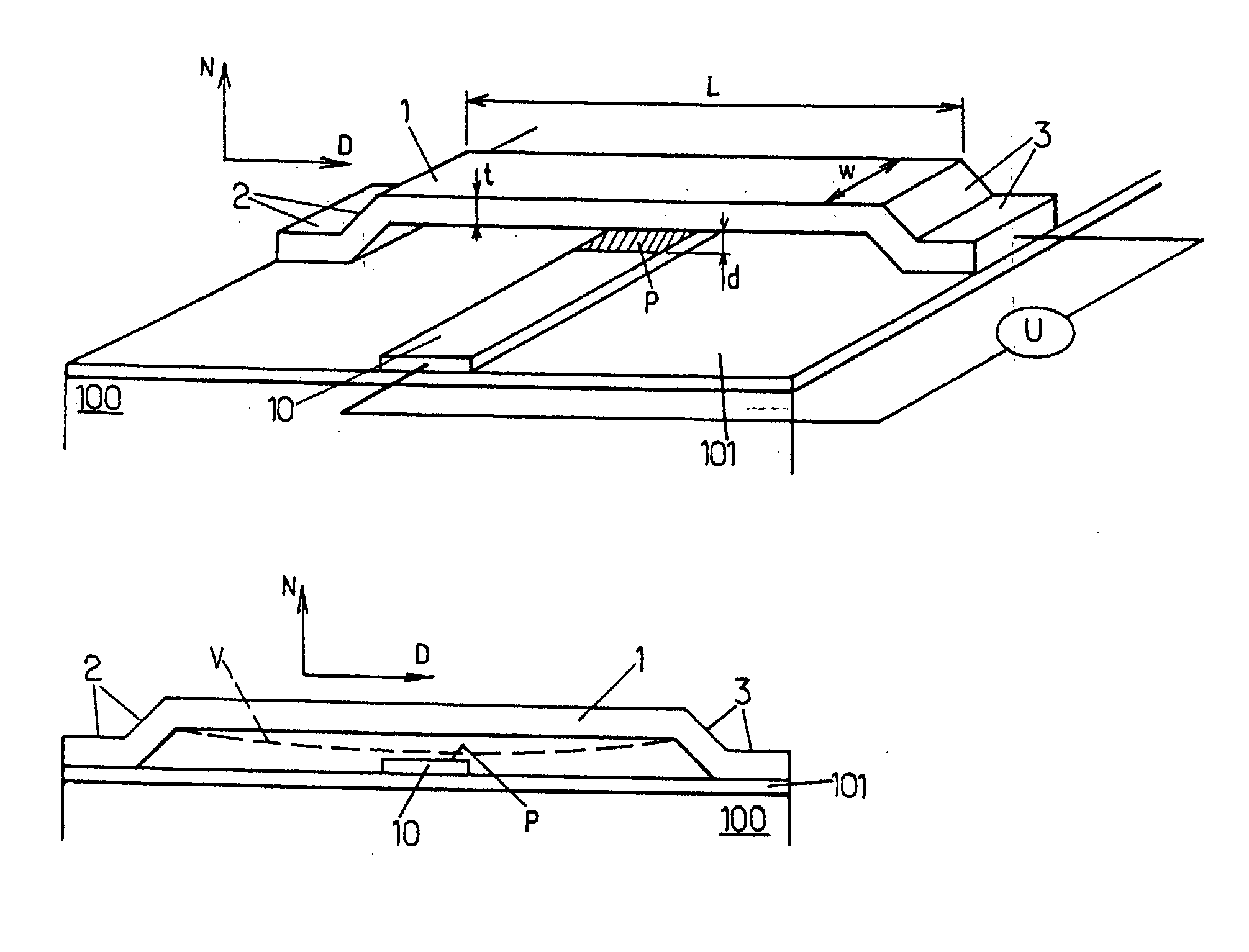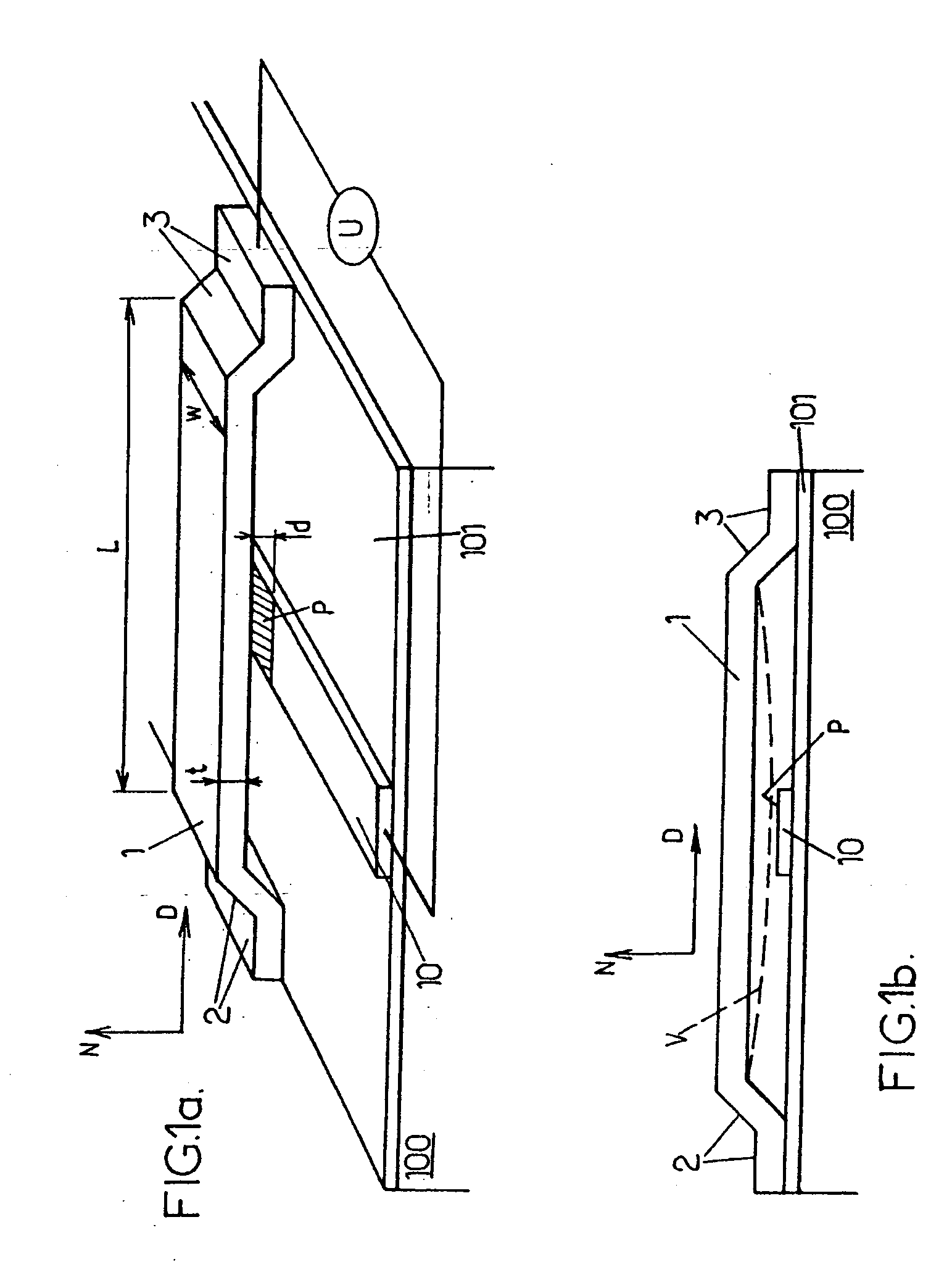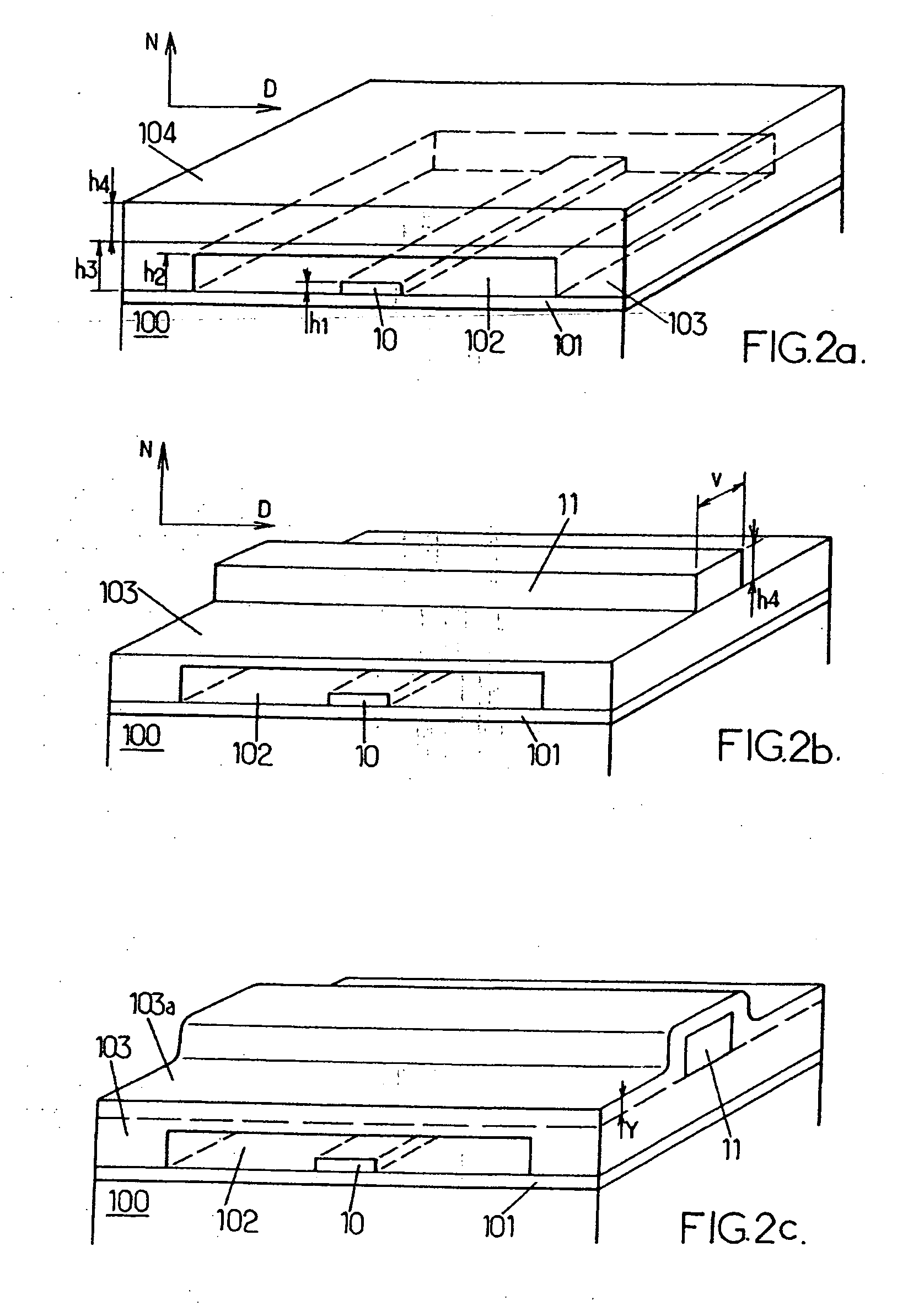Microelectromechanical system comprising a beam that undergoes flexural deformation
a micro-electromechanical system and beam technology, applied in the field of micro-electromechanical systems or mems, can solve the problem of rapid deformation and achieve the effect of high deformation rate and simple production
- Summary
- Abstract
- Description
- Claims
- Application Information
AI Technical Summary
Benefits of technology
Problems solved by technology
Method used
Image
Examples
Embodiment Construction
[0033] For the sake of clarity, the various elements shown in these figures have not been drawn to scale. FIGS. 1 and 2a-2f are perspective views of a substantially plane substrate, on which a microelectromechanical system according to the invention is produced. The substrate is in the lower part of each figure, and N denotes a direction perpendicular to the surface of the substrate, directed upwards in the figures. In the rest of the description, the terms “on”, “under”, “lower” and “upper” are used with reference to this orientation. Furthermore, in all the figures, identical references correspond to identical elements.
[0034] A process for fabricating a microelectromechanical system according to the invention will now be described with reference to FIGS. 2a-2f. In this description, elementary steps of the process that are known from the fabrication of an integrated electronic circuit will not be explained in detail. Only the succession of individual steps for producing the microe...
PUM
| Property | Measurement | Unit |
|---|---|---|
| width | aaaaa | aaaaa |
| thickness | aaaaa | aaaaa |
| width | aaaaa | aaaaa |
Abstract
Description
Claims
Application Information
 Login to View More
Login to View More - R&D
- Intellectual Property
- Life Sciences
- Materials
- Tech Scout
- Unparalleled Data Quality
- Higher Quality Content
- 60% Fewer Hallucinations
Browse by: Latest US Patents, China's latest patents, Technical Efficacy Thesaurus, Application Domain, Technology Topic, Popular Technical Reports.
© 2025 PatSnap. All rights reserved.Legal|Privacy policy|Modern Slavery Act Transparency Statement|Sitemap|About US| Contact US: help@patsnap.com



